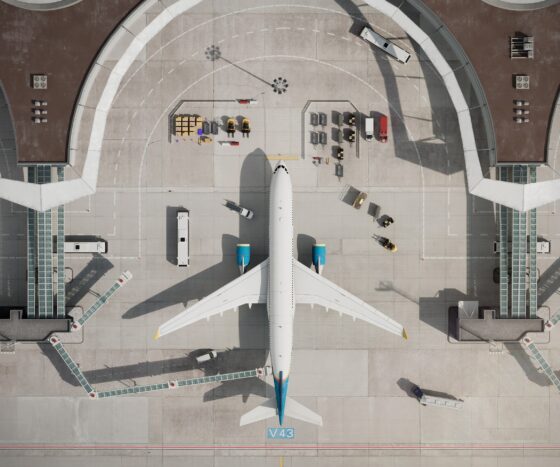
Under pressure to reduce its carbon footprint, air transport has pledged to drastically reduce its CO2 emissions, but it will take a very long time to meet its commitments.
What are the obligations?
According to the International Civil Aviation Organization (ICAO), a UN agency, aviation is responsible for between 2 and 3% of global CO2 emissions, the main greenhouse gas. Although weakened by the pandemic, global air traffic is expected to reach 10 billion passengers by 2050, more than double the level of 2019. That’s as much more emissions if nothing is done.
The International Air Transport Association (Iata), which unites the vast majority of airlines, and the airline industry have committed to reducing net CO2 emissions to zero by 2050.
Forty-two countries, including those of the EU, the United Kingdom and the United States, called on countries around the world in the “Toulouse Declaration” in February to endorse this goal at the next ICAO meeting at the end of September.
However, the impact of condensation trails left by aircraft on global warming is not the subject of any reduction commitment at this stage. Still poorly rated it seems “At least as important” than CO2 emissions, according to a study by the European Aviation Safety Agency (EASA).
How do you do that?
The sector is counting on technological and infrastructural improvements – new materials, more fuel-efficient engines, better management of the air traffic system – to clear part of the way.
The engine manufacturer CFM, a joint venture between GE and Safran, is working with its Rise project on the technologies of a future engine that will be available in 2035, reducing fuel consumption by more than 20%.
According to the European aviation sector (airlines and manufacturers), all these technological improvements will make it possible to achieve almost half of the expected profit. Iata thinks they will only help with 14% of the effort required.
Part – equivalent to 8% of the effort according to Europeans, up to 19% according to Iata – will come from a carbon capture and emissions trading system.
These improvements will take time to implement when it is necessary to act now, emphasize many NGOs calling for limiting or reducing air traffic.
What role for sustainable fuels?
Sustainable aviation fuels (SAF) are the primary means of decarbonising aviation – two thirds of the effort according to Iata, one third according to the European aviation sector.
They are made from biomass, waste oil and in the future even CO2 capture and green hydrogen to make synthetic fuels.
They have the advantage that they can be used directly in current aircraft and can reduce CO2 emissions over their entire life cycle by 80% compared to kerosene.
Airbus and Boeing have pledged that their aircraft will be able to fly at 100% SAF by 2030, but these fuels currently account for less than 0.1% of jet fuel consumed and are two to four times more expensive than kerosene.
To encourage its production, the EU is working on progressive obligations to include SAF in kerosene, the United States on tax credits.
What about hydrogen and electricity?
Electric propulsion is currently limited to small aircraft and future flying taxis in urban areas. The weight of the batteries required to store the energy makes it unsuitable for aircraft.
One development line is electric hybrid propulsion: during certain flight phases, such as take-off, an electric motor supplies extra energy to the combustion engine.
In the longer term, the research focuses on the fuel cell to power an electric motor by freeing itself from batteries: electricity would be produced on board by the chemical reaction between oxygen from the air and liquid hydrogen charged into tanks.
This research differs from that with regard to the hydrogen plane, where it would be burned directly in a heat engine.
The project, carried out by Airbus, aims to bring a first aircraft into service by 2035, likely short-haul flights with less than 100 seats initially, said chairman Guillaume Faury.
But hydrogen is nearly four times larger than kerosene, making it impossible to use on long-haul routes, for which SAF remains the only fuel.
(AFP)